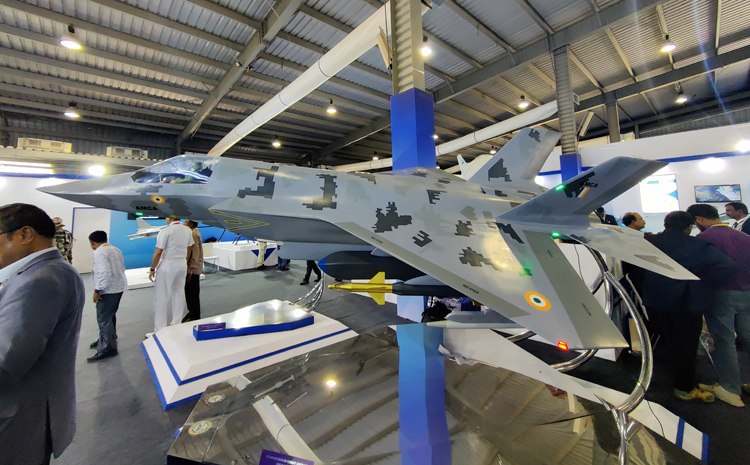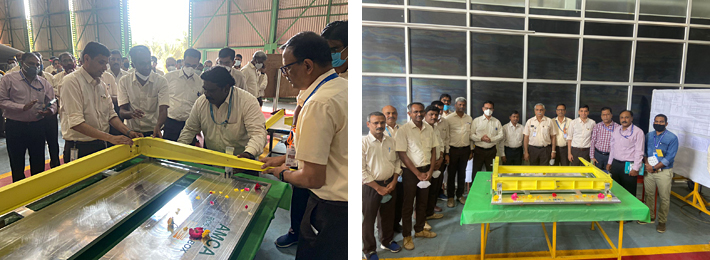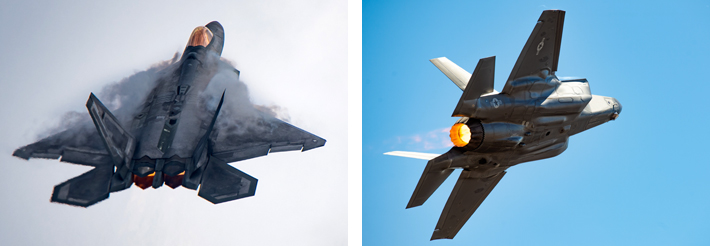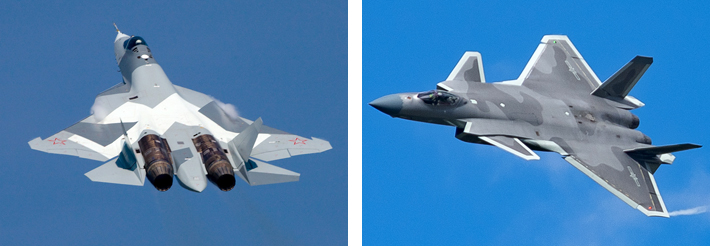INDIAN ARMED FORCES CHIEFS ON
OUR RELENTLESS AND FOCUSED PUBLISHING EFFORTS

SP Guide Publications puts forth a well compiled articulation of issues, pursuits and accomplishments of the Indian Army, over the years

I am confident that SP Guide Publications would continue to inform, inspire and influence.

My compliments to SP Guide Publications for informative and credible reportage on contemporary aerospace issues over the past six decades.
- Prime Minister witnesses 'Bharat Shakti' – a Tri-Services Firing and Manoeuvre Exercise in Pokhran, Rajasthan
- Interim Defence Budget 2024-25 — An Analysis
- Union Defence budget 2024
- Prime Minister Modi Commemorates Indian Navy Day in a Grand Ceremony
- Prime Minister Modi Flies in the LCA Tejas
- New Chapter in India-Italy Defence Ties
- Airpower beyond Boundaries
Indigenous 5th Generation AMCA
Redefining Indian Airpower with a leap into 5th Generation Supremacy
 |
The Author is Former Director General of Information Systems and A Special Forces Veteran, Indian Army |

On March 8, 2024, the Cabinet Committee on Security (CCS), headed by Prime Minister Narendra Modi, finally gave the green signal for indigenous development of the 5th generation stealth fighter; the Advanced Medium Combat Aircraft (AMCA) capable of achieving supersonic cruise speeds. Notably, China is believed to already have a fleet of some 200 J-20 5th generation fighter jets in operation. Meanwhile, Pakistan has disclosed intentions to acquire the Chinese Shenyang FC-31/J-31 fighter. China will have a much larger 5th generation fighter fleet, possibly many 6th generation fighters also, when the AMCA starts getting inducted into the Indian Air Force (IAF) beyond 2035.
CCS approval of the long-pending full-scale engineering development of five prototypes of the indigenous twin-engine AMCA, by the Aeronautical Development Agency (ADA) of DRDO will involve an initial cost of over ₹15,000 crore

The Indian AMCA programme was launched in 2010 to develop a 5th generation combat aircraft. It was then known as the Medium Combat Aircraft (MCA) programme. It ran parallel to the Indo-Russian Sukhoi/HAL FGFA programme. In 2010, the MCA was envisioned as a 20-tonne class combat fighter jet. A feasibility study was launched in October 2010, followed by 'project definition' and 'preliminary design; phase in 2013. The AMCA is now envisioned as a 25-tonne class fighter jet.

Between November 2013 and December 2014, nine design configurations of AMCA, starting from 3B-01 to 3B-09, were studied using computer-aided design (CAD), low-speed and-high-speed wind tunnel testing, and radar cross section (RCS) testing. In 2015, the basic design configuration of AMCA was finalised, which was accepted by the IAF in 2016. The IAF plans to procure at least 125 AMCA in Mark-1 and Mark-2 configurations. The Mark-2 of the AMCA is expected to have a more powerful engine; 6th generation features and technologies to stay relevant in the coming decades.
The IAF reportedly plans to induct seven squadrons (126 jets) of the AMCA
CCS approval of the long-pending full-scale engineering development of five prototypes of the indigenous twin-engine AMCA, along with a structural test specimen, extensive flight testing and certification, by the Aeronautical Development Agency (ADA) of DRDO will involve an initial cost of over ₹15,000 crore. The CCS also cleared the procurement of 34 more 'Dhruv' twin-engine Advanced Light Helicopters Mark-III, 25 for the Army and nine for the Coast Guard, from Hindustan Aeronautics Limited (HAL) for well over ₹8,000 crore. These will add to the some 300 5.5-tonne class helicopters already inducted into the Armed Forces.

Advanced stealth features in the 25-tonne AMCA will range from "serpentine air-intake" and an internal bay for smart weapons to radar absorbing materials and conformal antenna. It will be able to achieve supersonic cruise speeds without the use of afterburners as well as have data fusion and multi-sensor integration with Active Electronically Scanned Array (AESA) radars. According to an official, "Certain technologies that have to go into the AMCA will first have to be realised on the single-engine 4.5-generation Tejas Mark-2. These include sensor-fusion, side-stick controller, canards and artificial pilot technologies."
Aside from China's J-20 5th generation combat fighter jets, other combat aircraft in this category include the American F/A-22 Raptors and F-35 Lightning-II Joint Strike Fighters as well as the Russian Sukhoi-57s. Turkey's 5th generation fighter 'Kaan' has also made its maiden flight recently.

The IAF reportedly plans to induct seven squadrons (126 jets) of the AMCA. The first two squadrons will be powered by the GE F414 engines in the 98 Kilonewton (kN) thrust class to be jointly developed with the US. The next five AMCA Mark-2 squadrons, in turn, will have 110 kN engines. Along with GE, the French Safran and British Rolls-Royce are in the fray for this.
The first AMCA prototype is to roll out in four years – by mid-2028. The maiden flight would be in the next year – 2029. IAF will begin inducting the AMCA after 2035.
AMCA will follow the progressive induction of the Tejas Mark-1A and Mark-2 jets, with the IAF already grappling with just 31 fighter squadrons against the requirement of 42.5 squadrons officially required to combat the China-Pakistan threat. In August 2022, the CCS had cleared the over ₹9,000 crore development of the Tejas Mark-2 fighters with the more powerful GE F414 engines. IAF plans to induct six squadrons (108 jets) of Tejas Mark-2, which will have a longer combat range and greater weapon-carrying capacity than the Mark-1A variant. The IAF currently has only 40 Tejas Mark-1 jets powered by GE F404 engines. Deliveries of the 83 improved Tejas Mark-1A fighters for ₹46,898 crore are to begin soon, followed by another 97 such jets for around ₹67,000 crore. Unless there are hitches, deliveries of the 180 Tejas Mark-1A jets should be completed by around 2032. Tejas Mark-2 deliveries will then begin, followed by the AMCA. At the same time, the HAL will have to ramp up its production rate to deliver all these aircraft in time.

According to the projected timelines, the first AMCA prototype is to roll out in four years – by mid-2028. The maiden flight would be in the next year – 2029. It is envisaged that it will take nine to 10 years for the actual production of AMCA by HAL to begin; after all the development and flight-testing of prototypes is completed. According to an official, the IAF will begin inducting the AMCA after 2035.
The initial per unit cost of the AMCA Mk-1 is expected to be around ₹900 crore ($108 million) according to one source, dropping to ₹450-500 crore ($60 million) for later production models
The initial per unit cost of the AMCA Mk-1 is expected to be around ₹900 crore ($108 million) according to one source, dropping to ₹450-500 crore ($60 million) for later production models. This low-cost pricing (compared to similar development abroad) is attributed to using the GE F-414 engine, which could be produced indigenously 2027 onwards. The AMCA Mk-1, featuring a new indigenous 110 kN engine, could initially witness a price increase, but costs are expected to stabilise once production ramps up. India certainly has no time to lose.





